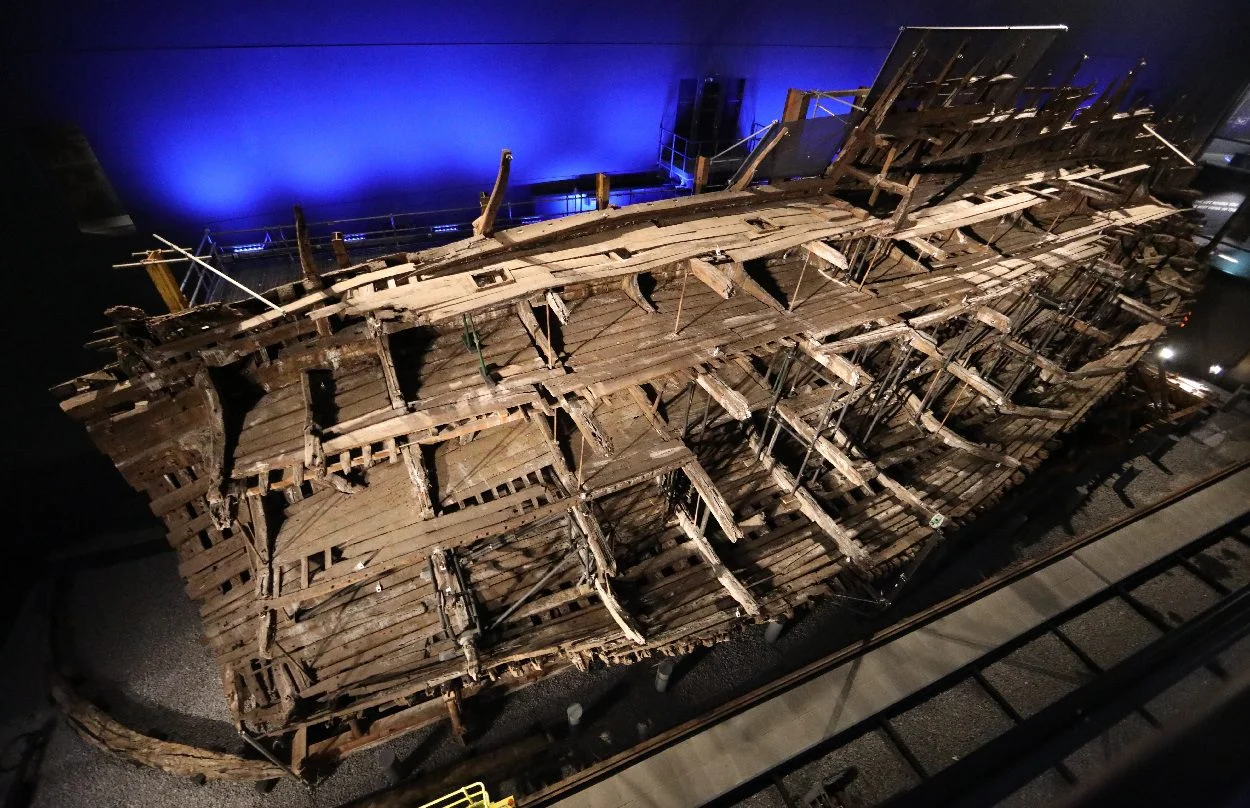A multidisciplinary team of researcher have used a new X-ray technique developed by Columbia and ESRF to discover that there are zinc-containing nanoparticles lodged within the wooden hull of the Mary Rose, Henry VIII’s favourite warship.
These nanoparticles are leading to the deterioration of the remains of the ship, which sank in battle in AD 1545 and was raised from the Solent in 1982. The Tudor ship and its collection of 10,000 artefacts are now housed in the Mary Rose museum in Portsmouth, UK.
Using computed tomography PDF (ctPDF) to examine the ship’s remains, researchers imaged how X-rays scattered through sample cross sections at the nanoscale and then precisely characterised the nature of the materials hidden deep in the Tudor wood. Comparing the resulting images pixel by pixel allowed them to determine that over centuries the wood had become riddled with nanoparticles of zinc sulfide.
Simon Billinge from Columbia University said: “It was especially exciting to get a glimpse into the history of the Mary Rose in the years since it sank. The zinc sulphide deposits come from anaerobic bacteria living in the wood as it sat sunk in the seabed-they are essentially bacteria poop. Our results were like a microscale archaeological dig where, by studying the location and composition of the deposits, we could see how the bacteria colonised the wood and what they ate.”
The team also found polymer deposits within the ship’s wood. The polymer was sprayed on the ship to help preserve its remains after it was raised from the seabed 39 years ago, when it was thought that the polymer would lend mechanical stability. However, there is some recent evidence that this polymer can itself degrade and act as a source of degrading acids to the materials that surround it.
The new X-ray technique now enables researchers to track the polymer within the ship’s wood-a vital step in developing conservation strategies. The new method could inform future strategies to preserve the Mary Rose and other important archaeological discoveries.
“This is the first time that we have used the technique of X-ray total scattering with computed tomography to successfully study cultural heritage samples at the nanoscale. This work opens doors to new experiments in the domain of conservation,” said Marco Di Michiel, scientist in charge of beamline ID15 at ESRF.
Efforts are now underway to understand in detail the degradation effects these zinc-based particles may have had on the Mary Rose and how they might be neutralised. Find out more
Header Image : Mary Rose – Image Credit : geni – CC-BY-SA 4.0





